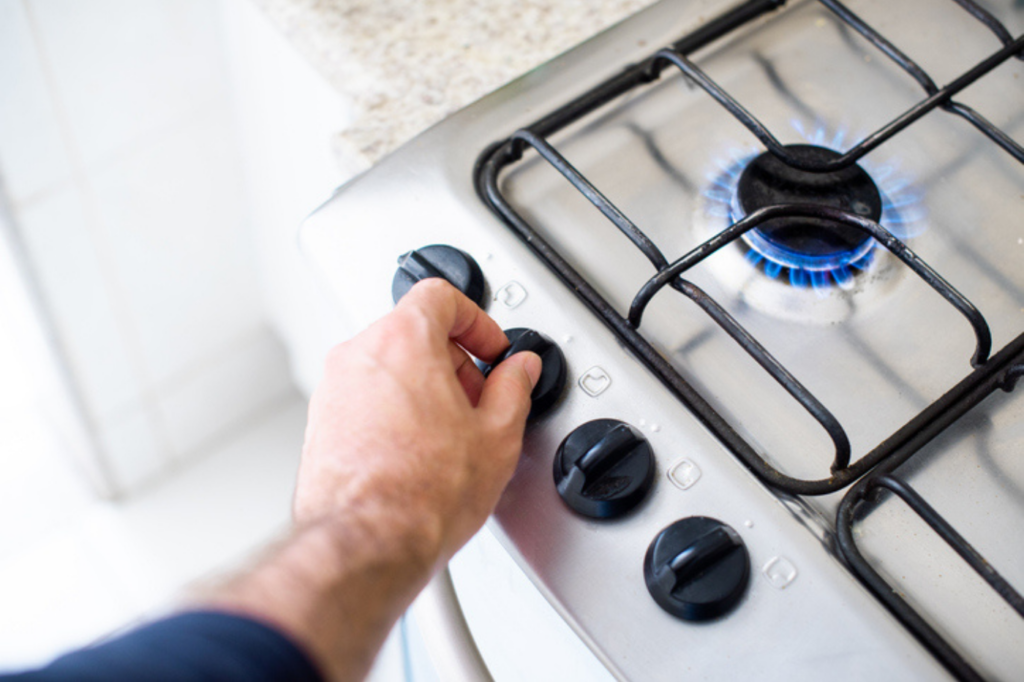Executive Summary:
THE COVID-19 PUBLIC HEALTH CRISIS has deepened existing economic and environmental justice crises in the United States. Previous research by the UCLA Center for Neighborhood Knowledge and its partners shows that the pandemic has exacerbated pre-pandemic health and economic inequalities for disadvantaged neighborhoods. Communities of color in particular have shouldered a disproportionate share of related health and economic risks due to widespread job and income loss, increased housing vulnerability and food insecurity, a lack of basic resources to shelter in place and worse access to critical utilities, such as broadband internet service. Taken together, the research highlights how systemic racial and economic inequality has been reproduced during the pandemic.
In this brief, we study household utility debt burden as another measure of the economic pressure facing low-income neighborhoods, with an emphasis on the impacts on racial equity. We define utility debt burden in this brief as the share of households in arrears (with past-due utility bills) within a zip code. We use data from Southern California Gas Company (SoCalGas)—an investor-owned utility that provides gas service to 21.8 million customers in Central and Southern California (about 50 percent of the state’s residents)—to examine the prevalence and degree of residential past-due accounts and debt.1 Utility debt levels serve as a useful proxy to identify households that are facing difficulties paying their rent or mortgage, because these two types of debt are likely to be highly correlated during economic crises. Further, when families are unable to pay their bills, they face difficult trade-offs, including skipping meals, delaying or avoiding medical treatment, and risking eviction. While the April 2020 statewide moratorium on utility shutoffs has provided continued utility access for many families, debt on residential accounts has not been forgiven; thus, residential utility debt has accumulated and is now due, as the California state moratorium ended on September 30, 2021.
We provide findings from two analyses on residential utility debt up until February 28, 2021 in neighborhoods served by SoCalGas. These are the most recently available public data and reflect the California Public Utility Commission’s April 2020 order to suspend service disconnections. First, we provide an overview of the spatial distribution of housing units with past-due utility bills in SoCalGas service areas and identify neighborhoods facing the greatest debt burden. Second, we use bivariate analysis to examine economic, housing and ethnoracial characteristics in areas with the highest debt burden. Our focus on neighborhoods is core to this study. The area-based analysis enables elected officials to use our findings to understand how utility debt relief distribution impacts their constituents. It also encourages advocacy for an equitable distribution of utility debt relief from federal stimulus and state budget surplus aid. Finally, it informs thoughtful, long-term solutions as we move into a phase of recovery, especially in the context of increasing focus on residential building electrification to meet climate and air quality goals.
Our main findings are as follows:
- Almost one-in-ten (9 percent) households in neighborhoods served by SoCalGas were 90 or more days behind.
- Utility debt burden varies systematically across neighborhoods. For instance, more than one in five households are behind on their gas bills both in core urban areas in South and Southeast Los Angeles neighborhoods and in some rural communities, such as Tupman in Kern County. These places are also among those most impacted by COVID-19.
- Neighborhoods with the highest utility debt rate were those with the highest poverty and unemployment rates, and lowest incomes. These neighborhoods had a higher proportion of renters, Latinx and Black residents compared to the average neighborhood in the SoCalGas service territory.
Based on our findings, we recommend:
- Target low-income households and severely impacted neighborhoods for existing COVID- 19-related government aid and utility debt-forgiveness programs to ensure that resources flow to the most vulnerable.
- Continue to monitor utility debt to ensure that disadvantaged communities are receiving needed services and assistance and to help utilities more effectively implement equity policies and programs.
- Further improve the availability of debt and shutoff data publicly reported by all utilities to holistically assess the combined impact of utility bill debt (natural gas, electricity, and water). This will enable research to better understand total energy burden, supporting more precise identification of households and neighborhoods in need of support.
- Conduct additional research to understand the impact of residential building electrification on households vulnerable to utility bill debt. Future research and policy should identify ways to support an equitable building transition, including policies and programs to mitigate any potential increases in energy burden.











